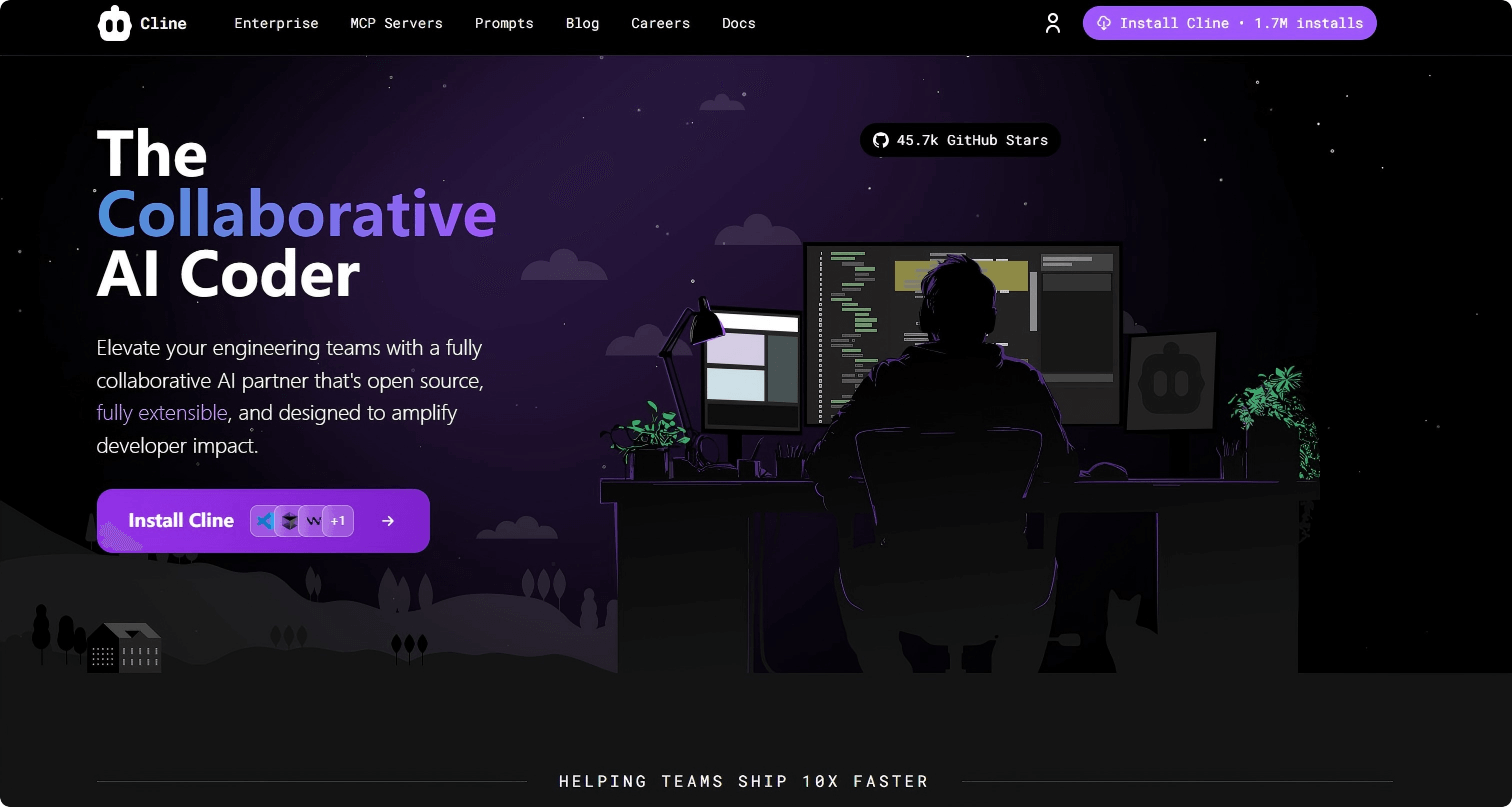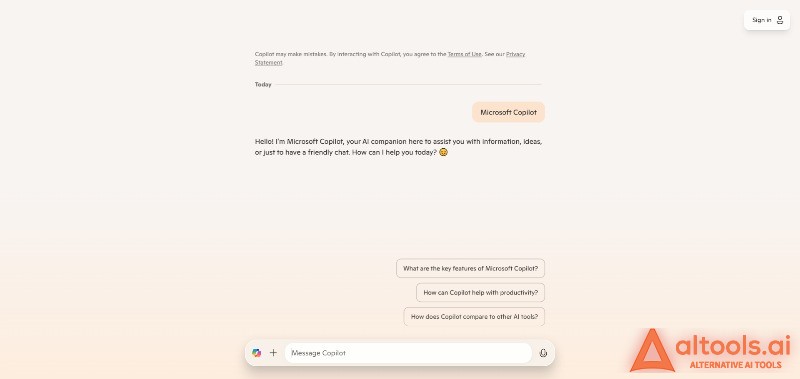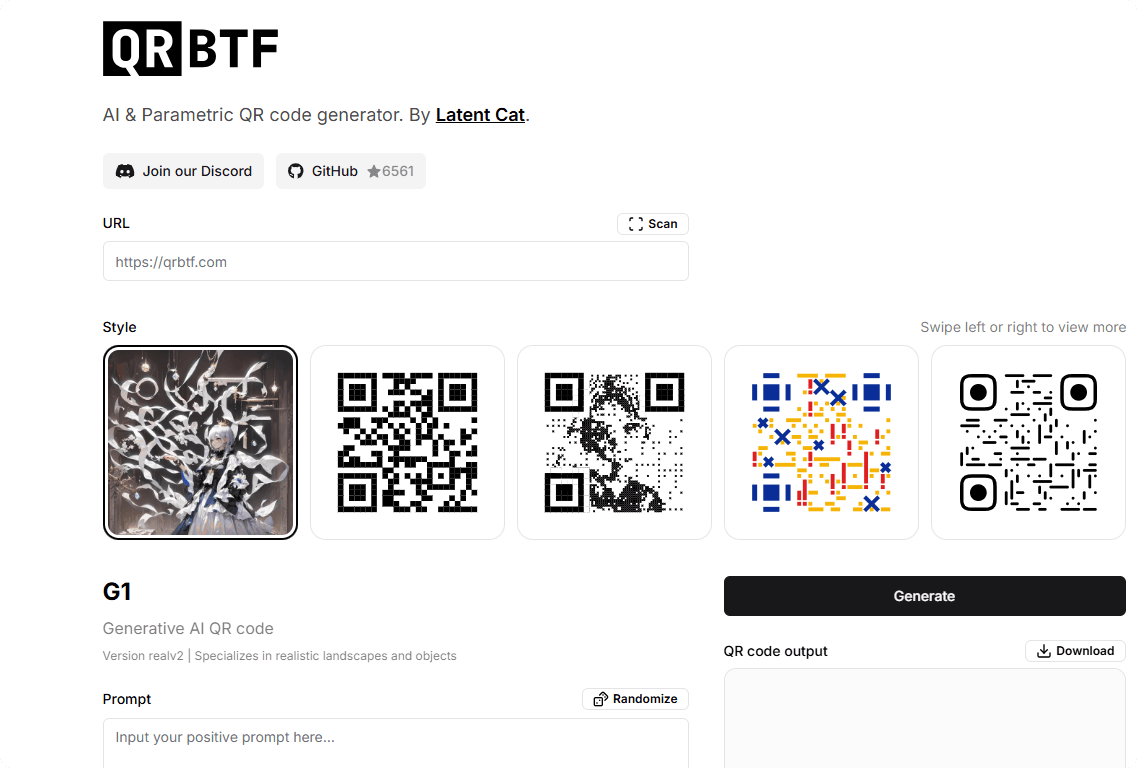What is Cline?
Cline is an open-source, model-agnostic AI coding assistant that runs as an autonomous agent inside your IDE (such as VS Code, Windsurf, Cursor, or Trae). Rather than binding you to a specific LLM, it acts as a flexible “thin agent layer” that lets you easily switch between OpenAI, Anthropic, Google Gemini, AWS Bedrock, OpenRouter, or local models like Ollama and LM Studio—without disrupting your workflow. With over 1.7 million installs and 45,000+ GitHub stars, Cline is being hailed as “the last AI coding agent you’ll ever need.”

Key Features
-
Plan/Act Architecture + Model Context Protocol (MCP)
Implements a two-phase agent structure—Plan (reasoning) and Act (execution)—to ensure clarity and transparency in every coding task. -
Multi-Model Flexibility
Supports Claude, GPT, Gemini, OpenRouter, AWS, Azure, and local models with a unified backend using MCP. -
Deep IDE Integration
Create/edit files, run terminal commands, launch headless browsers, read logs, and fix bugs—all directly from within your IDE. -
Browser & Runtime Actions
Launch headless browsers for automated testing, debugging, and capturing screenshots or console logs to pinpoint issues. -
Transparent Workflows with Checkpoints
Generates snapshots after each task step, allowing diff comparison, rollback, and approval for full control. -
Extensible via MCP Servers
Easily add tools with simple prompts (“Add a tool that…”), such as Jira fetchers, AWS instance managers, database accessors, and more. -
Enterprise-Level Security
Cline does not store any of your data. Secure endpoints like AWS Bedrock, Azure, GCP, or self-hosted APIs can be used for maximum privacy.
Technical Principles
-
Model Context Protocol (MCP)
A flexible middleware layer that enables seamless switching between cloud and local LLMs. -
Plan/Act Agent Structure
Cline reasons in the “Plan” phase and executes in the “Act” phase, making its workflow interpretable, testable, and controllable. -
Context Management with AST Parsing
It parses your code’s abstract syntax tree (AST) and chunks it into optimal segments to manage LLM token limits effectively—ideal for large codebases. -
IDE-Level API Access
Uses VS Code APIs to create files, display diffs (with user approval), run terminal commands, monitor build/test logs, and even perform browser-based debugging. -
Checkpoint & Snapshot System
Saves the workspace state after each key operation, allowing you to compare, approve, or revert changes at any stage.
Project Links
-
Official Website: https://cline.bot/
-
Blog Article: The Last AI Coding Agent You’ll Need
-
GitHub Repository: https://github.com/cline/cline
Use Cases
-
Full-Stack Development
Rapidly scaffold projects, set up CI/CD pipelines, or conduct large-scale refactors. -
Debugging & Testing
Automatically detect compile/runtime errors, run headless tests, and analyze screenshots or logs. -
DevOps & Infrastructure Automation
Retrieve Jira tickets, query databases, or manage AWS instances through a conversational interface. -
Model Switching & Experimentation
Easily switch between models to find the optimal fit for your task—without learning a new UI. -
Enterprise-Scale Codebases
Perfect for navigating and managing large repositories with AST-level parsing and interactive checkpoint workflows.
Related Posts




